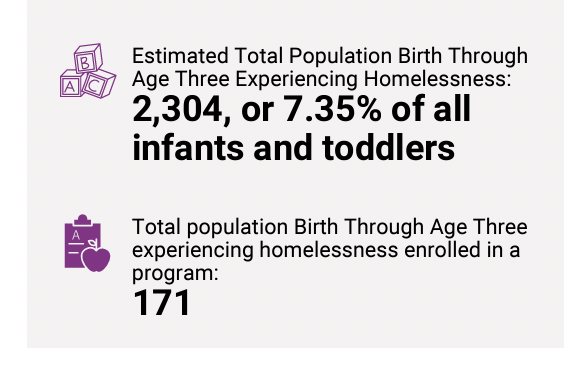Street Sense was asked not to use some last names to protect privacy.
Swami experienced homelessness at age 8 after his mother lost her job and could no longer afford the rent on their Illinois apartment.
For two years the mother and son lived in shelters, until his mother found employment and they got a stable place. Things started normalizing and “life was somewhat peaceful.” But at age 12, Swami was removed from his home by the state Department of Children and Family Services after reports of abuse and neglect.
Thus began his two year journey through the foster care system. Swami, 19, now a sophomore at the University of Illinois, wrote in an essay that he had seven foster care placements and “about 700 horrifying memories to accompany those placements.”
Swami shared his story on June 17 during a discussion at the Rayburn House Office Building, along with 12 other young adults who experienced homelessness as minors. They are college students from across the country who each received a $2,000 scholarship a year and a half ago from the National Association for the Education of Homeless Children and Youth.
“We want policymakers to hear directly from the youth,” said Barbara Duffield, policy director of the Association. Several congressional staff members attended the discussion. She hopes they share with their bosses “an understanding of why youth become homeless, and of the gaps in the services available to them.”
Nationally, more than 1 million children experienced homelessness during the 2010-11 school year—a 14 percent increase from the previous year. In the District, there were more than 3,000 homeless residents enrolled in school during the 2010-11 school year, a 22 percent increase in one year, according to the U.S. Department of Education.
The department of education defines homelessness as being without a fixed, regular, adequate nighttime residence. This includes those who are sharing the housing of others; living in hotels and motels, trailer parks, camping grounds, emergency or transitional housing; awaiting foster care placement; and living in areas not designed for sleeping or in substandard housing.
“Education is an important way for young people to break the cycle of poverty and homelessness in their families,” said Barb Dexter, a homeless education liaison for the Anchorage School District, who moderated the discussion.
Although the individual stories were unique, several commonalities were shared when students identified factors that contributed to their family’s unstable housing situation: working parents unable to afford housing, single parents, parents with drug or alcohol addictions, incarcerated parents, parents with health problems, being kicked out and leaving to escape “family drama” such as domestic violence.
“When you’re in a situation where the ones causing all of your heartache and stress are your family, you really don’t have anyone to turn to,” said Raven, 20, a sophomore at Louisiana State University. “Teachers and counselors might listen, but they can’t understand what you’re going through.”
Nicholas, 20, a sophomore at the University of North Carolina, said he focused on work to avoid dealing with his reality. “If you keep your mind busy, you don’t have time to think of where am I going to sleep, or when is the next time I’m going to get food?”
Several students described being reluctant to disclose their living situation or lack of parental involvement with teachers and school administrators due to embarrassment or not wanting to be labeled as a troubled youth.
“When a teenager is homeless a lot of people think they are a problem child or that it must be something that they’ve done,” said Tina, 20, a junior at Salem State University. “But that’s usually not the case. We are the victims of our parents’ decisions or unfortunate situations.”
To ensure that students who are experiencing homelessness have the best chance at completing high school, the McKinney-Vento Homeless Assistance Act requires states to have a state coordinator for homeless education and a homeless education liaison in each school district. Some of the larger districts often have their own homeless education programs, said Jan Moore, a program specialist at the National Center for Homeless Education, a technical assistance center that works with school districts to make sure the law is implemented.
The law focuses on school access and success. Each state gets federal money that is disbursed to the school districts through a competitive subgrant program. The school district liaison is responsible for working with students to remove barriers to enrollment, to maintain satisfactory attendance, and to reach academic achievement standards. Annual state performance reports monitor the school districts’ adherence to the law and compare the districts receiving grants to the ones that are not, Moore said.
“The McKinney-Vento is a non-funded mandate. Only about 9 percent of school districts get subgrants,” Moore said. “The other 91 percent are serving kids without receiving any federal funds, and the burden falls on the school districts.”
A majority of the students at the discussion credited involved teachers and education support professionals with helping them excel in school and make it into college. Students said these advocates often filled the role of a substitute parent.
“I had a phenomenal support group of four teachers who I called my four moms,” said Spencer, 20, a junior at University of Wisconsin. “They made sure I went to school and kept my grades up. They always made sure I had what I needed, if it was a bed that night, or food, or whatever. Without their support I definitely would not be where I am right now.”
Irene, 19, a junior at Texas State University, said a supportive guidance counselor encouraged her to go to college because of her high academic achievement, but she worries there are students who might not get the same type of help.
“It wasn’t until the school noticed I had good grades that I felt like I was important,” she said. “There are so many kids with problems who don’t get good grades and are not going to get noticed.”
For students who were considered to be unaccompanied youths, their lack of guardianship made it difficult for them to meet certain requirements, or to utilize programs available for low-income families. Many recalled forging their parents’ signatures on report cards and other forms. Many said they were not able to apply for free and reduced lunch, or for financial aid for college because they did not have someone to fill out the applications.
“Being in a position where I was unaccompanied and not necessarily adopted by someone else left me with no guardianship,” said Tia, 19, a sophomore at Meredith College.
Their experience with homelessness or broken families is not far from the students’ minds as they continue their college educations. Some have taken on the legal guardianship of younger siblings. Others said they struggle to pay for housing and tuition due to a lack of financial support from parents or guardians. These are reasons why it was important for them to have the discussion in Washington, D.C., to hopefully encourage changes in education policies that affect children in similar situations.
“I want lawmakers to be compelled to do something,” Duffield said. “You have to be educated, but you also have to be moved, and that’s what these kids’ stories do.”
Determined to Succeed
Issues |Education
Region |Washington DC
email updates
We believe ending homelessness begins with listening to the stories of those who have experienced it.
Subscribe






